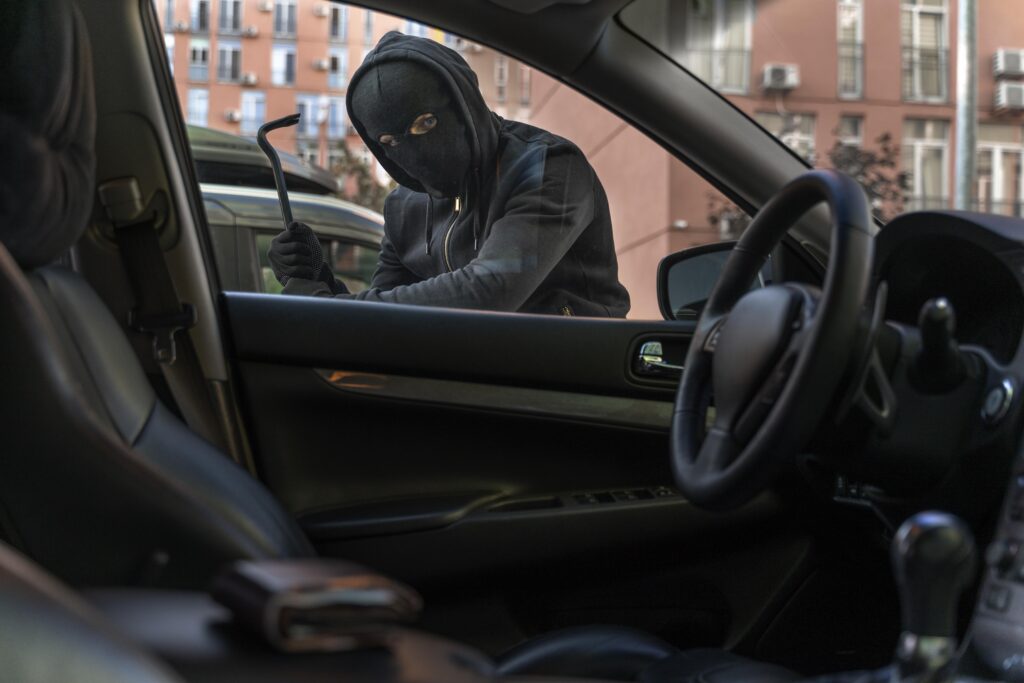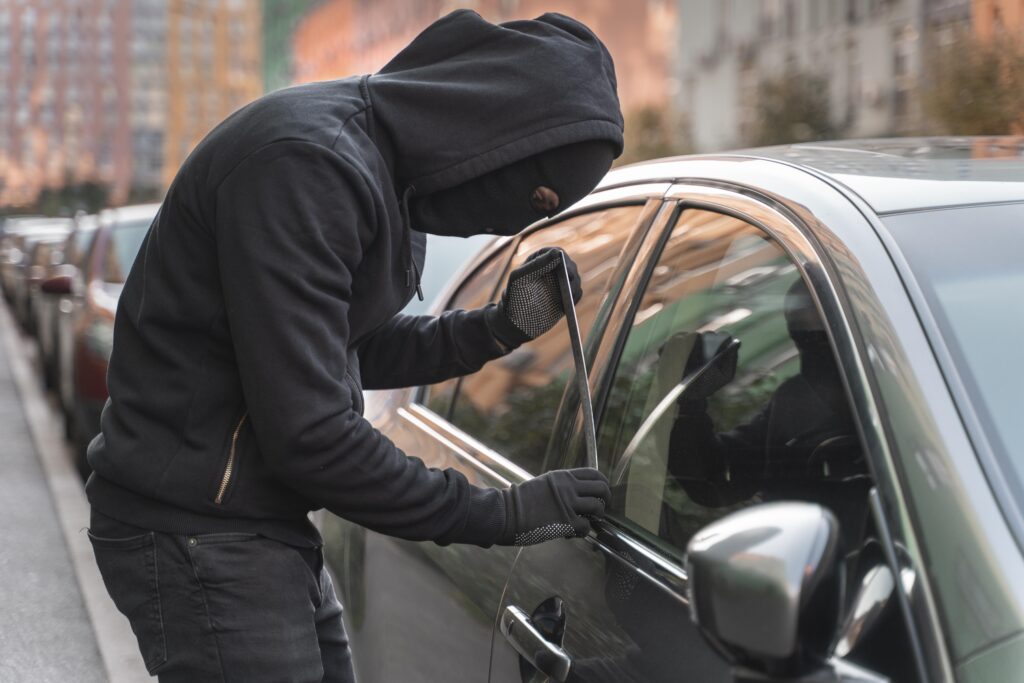Facing carjacking charges in California? You’re probably wondering exactly what you’re up against. Is it just another theft charge, or something more serious? Under California Penal Code § 215 (PC), carjacking is treated as a violent felony, and it can send you to prison for years and count as a “strike” under the state’s Three Strikes Law.
Let’s break down what the law actually says, what the prosecution has to prove, possible penalties, and how you can defend yourself if you’re charged under 215 PC.
What Is Carjacking?
Carjacking is nothing more or less than taking someone’s car by force. However, California law has specific requirements that have to be met for something to qualify as carjacking.
Under Penal Code § 215, carjacking is defined as:
“The felonious taking of a motor vehicle in the possession of another, from his or her person or immediate presence, or from the person or immediate presence of a passenger of the motor vehicle, against his or her will and with the intent to either permanently or temporarily deprive the person in possession of the vehicle of their possession, accomplished by means of force or fear.”
In simple terms, carjacking is robbery involving a car. It’s not stealing an unattended vehicle in a parking lot, which would usually be grand theft auto. Carjacking involves taking the car directly from a person using force or fear.
Even if you never actually drive away with the car, you could still be charged if you used intimidation or violence to take it.
Elements of Carjacking
For prosecutors to convict you of carjacking under 215 PC, they have to prove every one of the following elements beyond a reasonable doubt:
- You took a motor vehicle that didn’t belong to you: The vehicle has to be in someone else’s possession.
- The vehicle was taken from another person’s immediate presence: “Immediate presence” means the person was close enough to see or control the vehicle. They don’t have to be inside it, either. Standing nearby can still count.
- You used force or fear to take the vehicle: Threatening harm, showing a weapon, or using verbal or physical violence all qualify.
- The act was against the person’s will: The person didn’t consent or agree to you taking the vehicle.
- You intended to deprive the person of the vehicle temporarily or permanently: Even if you only planned to take it for a short joyride, it still meets the “intent to deprive” requirement.
Examples of Carjacking
Let’s look at a few examples to see just how broad 215 PC can be.
- Example 1: You approach a driver stopped at a red light, show a gun, and demand that they get out of the car. You drive off.
- Example 2: You threaten someone in a parking lot and demand their keys. They hand them over out of fear, and you take the car.
- Example 3: You get into a friend’s car without permission, start the engine, and drive off while they’re standing next to it, yelling “Stop!”.
- Example 4: You borrow a relative’s car and don’t return it. That’s not carjacking, because there was consent at the start and no use of force or fear.
Carjacking Laws and Penalties
Carjacking in California is always a felony. There’s no misdemeanor version. However, the outcomes you face will vary based on different “aggravating” factors.
Base Penalties Under Penal Code 215 PC
If convicted, you face:
- 3, 5, or 9 years in state prison
- Fines up to $10,000
- Formal probation in limited cases
- A strike under California’s Three Strikes Law (more on that below)
Sentence Enhancements and Aggravating Factors
The base penalties can increase sharply if other circumstances apply:
- Use of a firearm: If you used a gun, expect extra prison time under California’s 10-20-life “use a gun” law (PC 12022.53). You’ll get 10 years for using it, 20 for firing it, and 25-to-life if someone was seriously hurt or killed.
- Gang involvement: If prosecutors believe the act was gang-related, PC 186.22 enhancements can add years to your sentence.
- Victim injury: If someone was injured during the carjacking, great bodily injury enhancements (PC 12022.7) can add three to six years.
- Kidnapping during the carjacking: That could lead to a separate charge under PC 209.5, carrying a life sentence.
Civil Consequences
Aside from prison time, a conviction can have long-term effects on your life:
- Loss of employment opportunities
- Difficulty securing housing
- Immigration consequences if you’re not a U.S. citizen
- A permanent criminal record that can’t easily be expunged
Related Offenses
Carjacking charges can appear alongside or overlap with other serious crimes, like:
- Robbery (PC 211): Both involve taking property by force or fear. The difference is that carjacking specifically involves a vehicle.
- Grand Theft Auto (PC 487(d)(1)): Taking a car without the owner’s consent, but without directly confronting them.
- Attempted Carjacking: If you tried but didn’t succeed, you could still face felony charges.
- Assault with a Deadly Weapon (PC 245): If you used a weapon or caused injury.
- Kidnapping (PC 207): Moving a victim against their will can add a separate, serious felony charge.
Is Carjacking a Strike Offense in California?
Yes, carjacking is considered a “strike offense” under California’s Three Strikes Law.
Quick Overview of the Three Strikes Law
The Three Strikes Law punishes repeat offenders more harshly. Here’s how it works:
- First Strike: You’re convicted of a serious or violent felony (like carjacking).
- Second Strike: If you commit another felony later, your sentence is doubled.
- Third Strike: If you have two prior strike convictions and commit another serious felony, you could face 25 years to life in prison.
Carjacking is classified as both violent and serious, so a conviction can have major consequences for any future charges, even if they’re not violent.
Defenses to Carjacking | 215 PC
Even though carjacking is a serious felony, several potential defenses could reduce or even dismiss your charges. The right strategy depends on your case specifics, but here are some of the most common:
- Lack of Force or Fear
If no actual force or fear was used, it might not qualify as carjacking. It could be a lesser charge, like unauthorized use of a vehicle.
- Mistaken Identity
Carjacking usually happens in chaotic or dark conditions, and witnesses can easily misidentify a suspect.
- Consent
If the vehicle’s owner gave you permission to take or use the car (even temporarily), it wasn’t “against their will.”
- Lack of Intent
The prosecution has to prove that you intended to deprive the owner of the car.
- Duress or Coercion
If someone threatened or forced you to commit the carjacking, you may have a valid duress defense.
- Insufficient Evidence
In many cases, prosecutors rely on circumstantial evidence, like fingerprints or surveillance footage, that may not clearly prove guilt.
Contact a Criminal Defense Attorney
Facing a carjacking charge under 215 PC is serious. You’re looking at a violent felony on your record and the possibility of a “strike” that can haunt you for life.
Don’t try to handle this on your own. A qualified California criminal defense attorney can:
- Review all the evidence against you
- Challenge unreliable witness statements or weak identification
- Argue for dismissal or reduced charges (for example, to grand theft auto or attempted carjacking)
- Explore plea deals to minimize sentencing
- Defend you in court with a strategy built around your specific circumstances
At the Law Office of David L. Faulkner, we understand how frightening and overwhelming a carjacking charge can be. Contact us today to discuss your case.










